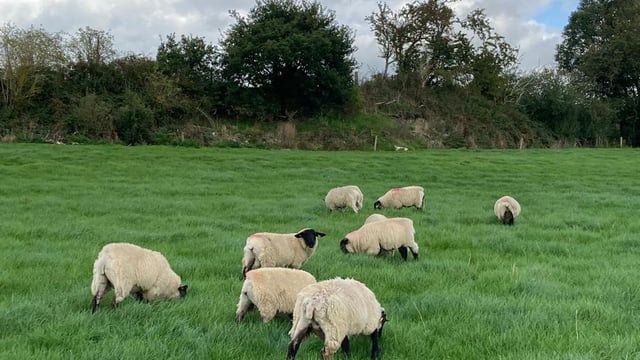Protected urea sales continue to grow in Northern Ireland
United Feeds has confirmed that protected urea accounted for 50% of all nitrogen (N) sold by the business over the past three years.
“We have grown the protected urea business from a standing start in 10 years,” general manager, Clarence Calderwood told Agriland.
“The first trial was kicked-off during July 2014, in the middle of a heat wave. You could have called it a baptism of fire. I could not have conceived of a tougher test for a urea-based fertiliser.
“The new product passed with flying colours, which is why we have actively promoted the use of protected urea from the outset."
United Feeds had been actively looking for a fertiliser N source as reliable as calcium ammonium nitrate (CAN) throughout the growing season but which also delivered real value for money to the farmer.
SustaiN (or as it was known then, KaN) was the protected urea option, which the company committed to at the outset.
KaN was chosen as the urease inhibitor it was treated with was 'agrotain', the most widely tried and tested in the marketplace globally.
“We were aware of the fact that the urease inhibitor, which coats the urea granules, acts to reduce nitrous oxide volatilisation levels from the fertiliser," Calderwood continued.
“It is this technology that ensures that protected urea can be used effectively even in the hottest weather conditions. But back in 2014, the real driver for the product was the grass output-related benefits that it can genuinely deliver.
“It is only in recent years that the environmental benefits associated with protected urea have become a major selling point.”
Significantly, a number of milk processers in Northern Ireland now offer milk price-related sustainability bonuses, based on the use of protected urea.
Results from a study carried out by the Agri-Food and Biosciences’ Institute (AFBI) in tandem with Teagasc have confirmed that considerable benefits can be accrued from using urea in combination with the urease inhibitor NBPT (N-(n-butyl) thiophosphorictriamide).
The work shows that urea + NBPT offers a reduction in ammonia losses of up to 84% compared with straight urea, while maintaining similar agronomic yields to CAN and reducing nitrous oxide emissions by up to 73%.
Total annual grass yields are comparable between CAN, urea or protected urea coated with an inhibitor.
However, protected urea can deliver a significant financial saving per unit of N when compared to CAN.
All of this confirms that comparable levels of productivity, as well as reduced volatile N losses, are achievable.
“SustaiN is available with potash and sulphur added. However, the addition of phosphate is not an option at the present time as the phosphorous-based chemical acts to erode the coating around the urea granules," Calderwood continued.





